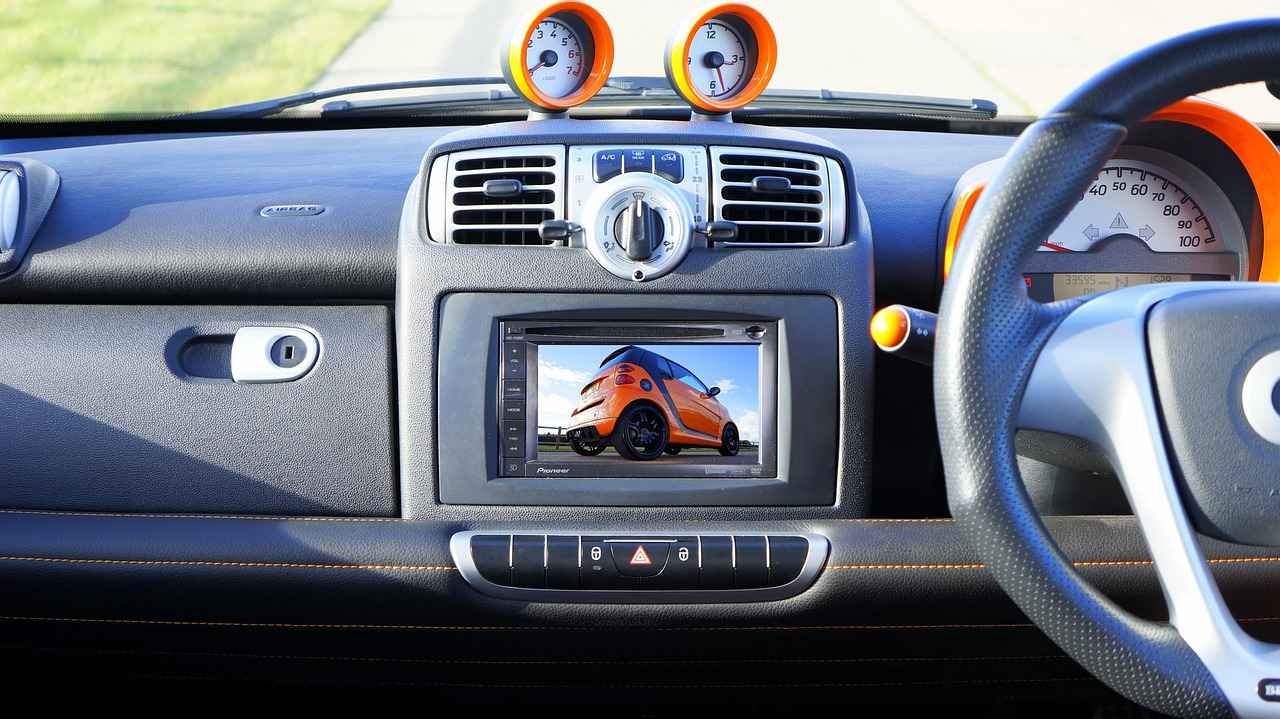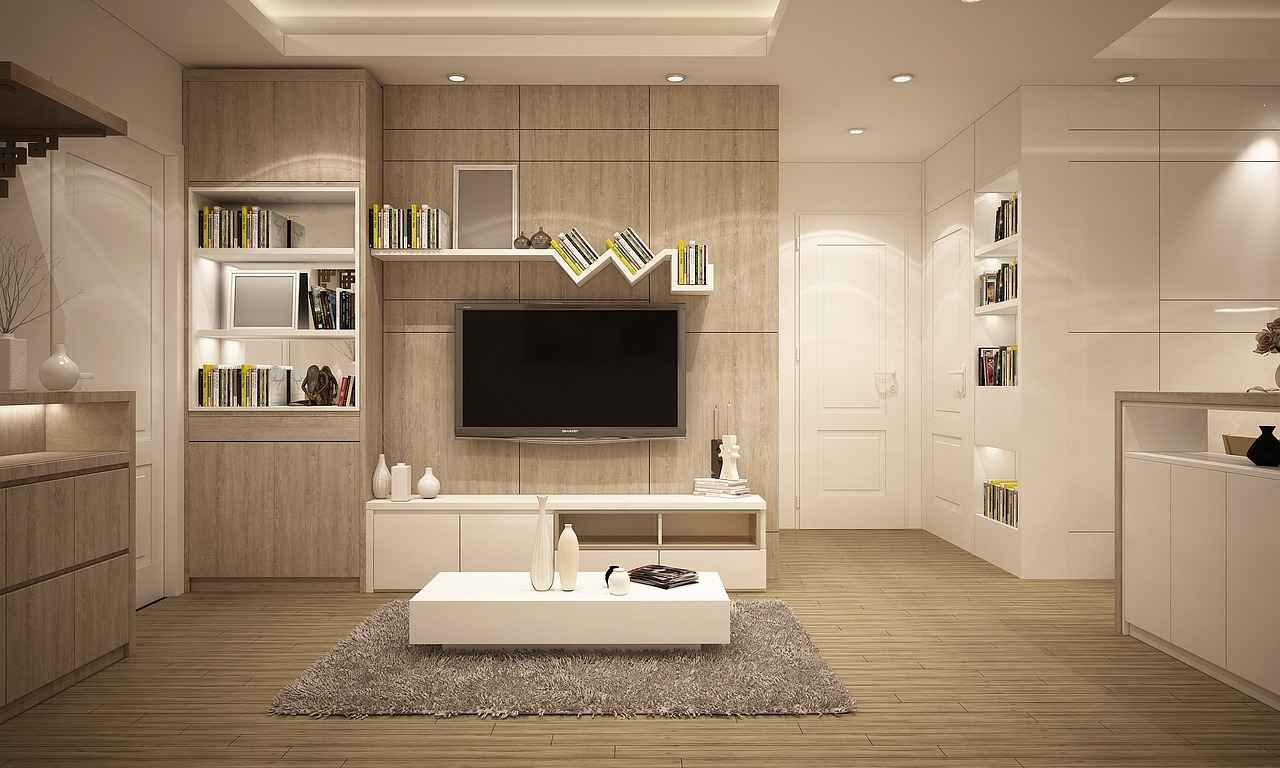This article delves into budget-friendly smart home devices that enhance convenience, security, and energy efficiency. With the rapid advancement of technology, transforming your living space into a smart home is more accessible than ever. Discover the top choices, their features, and how they can revolutionize your daily life.
1. Smart Speakers: Your Home Assistant
Smart speakers like Amazon Echo and Google Nest Hub serve as your personal assistants, offering voice control and seamless integration with other smart devices. They are essential for creating a connected home environment.
2. Smart Plugs: Control Your Appliances Remotely
Smart plugs allow you to manage your devices from anywhere using your smartphone or voice commands. This not only adds convenience but also contributes to energy savings.
- Benefits of Smart Plugs: Manage energy consumption, schedule appliance usage, and enhance security by simulating occupancy when you’re away.
- Choosing the Right Smart Plug: Consider compatibility, load capacity, and scheduling features.
- Popular Brands: Explore options from TP-Link, Wemo, and Amazon.
3. Smart Thermostats: Efficient Climate Control
Smart thermostats like the Nest Learning Thermostat and Ecobee SmartThermostat optimize your home’s energy use, learning your preferences to reduce utility bills.
4. Smart Security Cameras: Enhanced Home Monitoring
Smart security cameras provide real-time surveillance and alerts, allowing you to monitor your home from anywhere through your smartphone. Brands like Ring and Arlo offer various options to suit your needs.
5. Smart Lighting: Illuminate Your Space
Smart lighting systems enable you to control brightness and color through apps or voice commands, enhancing ambiance and energy efficiency. Popular options include Philips Hue and LIFX.
6. Smart Doorbells: See Who’s at Your Door
Smart doorbells provide video feeds and two-way audio, enhancing home security. Consider options like Ring Video Doorbell and Nest Hello.
7. Smart Home Hubs: Centralized Control
Smart home hubs like Samsung SmartThings and Amazon Echo Plus connect and manage all your devices from a single interface, streamlining your smart home experience.
8. Smart Home Security Systems: Comprehensive Protection
Affordable smart home security systems offer complete monitoring solutions, ensuring peace of mind. Brands like SimpliSafe provide flexible security tailored to various home sizes.
9. Smart Appliances: Efficiency and Convenience
Smart appliances from brands like LG and Samsung offer remote control and monitoring, improving efficiency in daily tasks.
10. Smart Sensors: Monitor Your Environment
Smart sensors for smoke, carbon monoxide, and water leaks provide alerts to protect your home. Explore options like Nest Protect for smoke detection.
11. Smart Blinds: Automated Light Control
Smart blinds enhance energy efficiency and comfort. Brands like Lutron offer various styles to suit different home designs.
12. Conclusion: Embracing Smart Home Technology
Affordable smart home devices provide enhanced convenience, security, and energy efficiency, making it easier to create a connected living space. Embrace these technologies to enjoy a smarter, more efficient home.

1. Smart Speakers: Your Home Assistant
Smart Speakers: Your Home Assistant
In today’s digital age, smart speakers have become more than just a gadget; they are essential components of a modern, connected home. Devices like the Amazon Echo and Google Nest Hub not only provide entertainment but also serve as powerful home assistants that enhance daily living.
These devices come equipped with voice control capabilities, allowing users to perform tasks hands-free. Whether it’s playing music, setting reminders, or answering questions, smart speakers can do it all with just a simple voice command. This feature is especially beneficial for individuals with mobility challenges or those who prefer convenience.
Moreover, smart speakers can seamlessly integrate with a variety of other smart devices in your home, such as lights, thermostats, and security systems. This integration creates a cohesive smart home ecosystem, enabling users to control multiple devices through a single interface. For instance, you can ask your smart speaker to dim the lights and adjust the thermostat to create the perfect ambiance for movie night.
Another significant advantage of smart speakers is their ability to provide real-time information. From weather updates to news briefings, these devices keep you informed without requiring you to check your phone or computer. This feature enhances your overall productivity and helps you stay organized throughout the day.
In conclusion, smart speakers like the Amazon Echo and Google Nest Hub are indispensable tools for anyone looking to create a connected home. They not only offer convenience and efficiency but also enrich your lifestyle by integrating various smart technologies. As you consider enhancing your living space, investing in a smart speaker could be a transformative decision.

2. Smart Plugs: Control Your Appliances Remotely
Smart Plugs: Control Your Appliances Remotely
In today’s fast-paced world, smart plugs are becoming an essential part of smart home technology. These devices allow you to control your appliances remotely, ensuring that you can manage your energy consumption and enhance your home’s convenience with just a few taps on your smartphone or through voice commands.
How Do Smart Plugs Work?
Smart plugs connect to your Wi-Fi network, allowing you to control any device plugged into them via a mobile app. This means you can turn on your coffee maker from bed or switch off your lamps after leaving home. The integration with voice assistants like Amazon Alexa or Google Assistant further simplifies the process, enabling hands-free operation.
Benefits of Using Smart Plugs
- Energy Savings: By scheduling devices to turn off when not in use, smart plugs help reduce energy waste and lower utility bills.
- Home Security: Smart plugs can simulate occupancy by turning lights on and off while you are away, deterring potential intruders.
- Convenience: Control your devices from anywhere, making it easy to manage your home even when you’re not there.
Choosing the Right Smart Plug
When selecting a smart plug, consider compatibility with your existing home assistant, the maximum load capacity for your devices, and additional features like scheduling and energy monitoring. Popular brands include TP-Link, Wemo, and Amazon, each offering various models to suit different needs and budgets.
Setting Up Your Smart Plug
Installation is typically straightforward: plug the device into a wall outlet, connect it to your home Wi-Fi via the corresponding app, and you’re ready to go. Most apps provide user-friendly interfaces, making setup a breeze.
Conclusion
Smart plugs are a simple yet effective way to enhance your home’s functionality. By incorporating these devices into your daily routine, you can enjoy greater control over your energy usage and improve your overall home automation experience.
Benefits of Smart Plugs
In today’s fast-paced world, managing energy consumption and enhancing home security has become increasingly important. Smart plugs are innovative devices that offer a range of benefits, making them a valuable addition to any smart home setup.
- Energy Management: Smart plugs allow users to monitor and control energy usage effectively. By connecting appliances to these plugs, you can track their energy consumption through an app. This feature promotes energy efficiency and helps reduce electricity bills.
- Scheduling Appliance Usage: One of the standout features of smart plugs is their ability to schedule when devices turn on or off. This means you can set your coffee maker to brew at a specific time each morning or ensure that your lights turn off automatically when you leave home, enhancing convenience and energy savings.
- Enhanced Security: Smart plugs can simulate occupancy by turning lights and appliances on and off at scheduled times, making it appear as though someone is home. This feature is particularly beneficial when you’re away for an extended period, as it can deter potential intruders.
- Remote Control: With smart plugs, you can control your devices from anywhere using your smartphone. Whether you forgot to turn off your iron or want to turn on a fan before you arrive home, remote access provides peace of mind and convenience.
- Voice Control: Many smart plugs are compatible with voice assistants like Amazon Alexa and Google Assistant. This integration allows for hands-free control of your appliances, adding another layer of convenience to your daily routine.
In conclusion, smart plugs are a versatile and affordable solution for managing energy consumption, scheduling appliance usage, and enhancing security in your home. By incorporating these devices into your smart home ecosystem, you can enjoy greater control and efficiency in your everyday life.
How to Choose the Right Smart Plug
When selecting a smart plug, it’s essential to consider several key factors to ensure it meets your needs and integrates seamlessly into your smart home ecosystem. Below are the critical aspects to keep in mind:
- Compatibility with Your Home Assistant: Ensure that the smart plug you choose is compatible with your existing home assistant, such as Amazon Alexa, Google Assistant, or Apple HomeKit. This compatibility allows for easy voice control and integration with other smart devices.
- Maximum Load Capacity: Different smart plugs come with varying load capacities. It’s crucial to check the wattage rating to avoid overloading the device. Most plugs can handle between 10 to 15 amps, which is sufficient for most household appliances, but always verify the specifications.
- Scheduling Features: Look for smart plugs that offer scheduling capabilities. This feature allows you to set specific times for your devices to turn on or off, enhancing energy efficiency and convenience. For example, you can program your coffee maker to start brewing in the morning before you wake up.
- Energy Monitoring: Some advanced smart plugs come with energy monitoring features that track the energy consumption of connected devices. This can help you identify which appliances use the most power and adjust your usage habits accordingly.
- Size and Design: Consider the size and design of the smart plug, especially if you plan to use multiple plugs in close proximity. Some designs may block adjacent outlets, so look for compact models that won’t interfere with other devices.
- App Usability: The accompanying app should be user-friendly and intuitive. A well-designed app can enhance your experience by making it easier to manage your devices, set schedules, and monitor energy usage.
By taking these factors into account, you can choose the right smart plug that not only fits your lifestyle but also enhances the functionality of your smart home. Investing in the right smart plug can lead to greater convenience, energy savings, and improved control over your household appliances.
Popular Smart Plug Brands
In the rapidly evolving world of smart home technology, smart plugs have emerged as essential devices that offer convenience and energy efficiency. These compact gadgets allow you to control your appliances remotely, making them a valuable addition to any modern home. Below, we explore some of the most that cater to various needs and budgets.
- TP-Link: Known for its reliability, TP-Link offers a range of smart plugs that feature user-friendly apps and voice control compatibility with platforms like Amazon Alexa and Google Assistant. Their Kasa Smart Plug is particularly popular for its scheduling capabilities and energy monitoring features.
- Wemo: A brand under Belkin, Wemo smart plugs are designed for easy integration with Apple HomeKit, allowing seamless control through Siri. The Wemo Mini Smart Plug is a favorite due to its compact design and ability to work with a wide array of devices.
- Amazon: With its Echo line of products, Amazon has made a significant impact in the smart home market. The Amazon Smart Plug is designed for effortless setup and control via the Alexa app, making it an excellent choice for those already invested in the Amazon ecosystem.
- TP-Link: Known for its reliability, TP-Link offers a range of smart plugs that feature user-friendly apps and voice control compatibility with platforms like Amazon Alexa and Google Assistant. Their Kasa Smart Plug is particularly popular for its scheduling capabilities and energy monitoring features.
- Meross: Meross smart plugs are budget-friendly and offer a surprising array of features, including remote control, voice commands, and scheduling options. They are compatible with both Amazon Alexa and Google Assistant, making them versatile for various smart home setups.
When selecting a smart plug, consider your specific needs, such as compatibility with existing smart home devices, ease of use, and unique features like energy monitoring. With options from these reputable brands, you can find a smart plug that fits your lifestyle and budget.
In conclusion, smart plugs are a gateway to a more efficient and connected home. By choosing from trusted brands like TP-Link, Wemo, and Amazon, you can enhance your home automation experience while enjoying the benefits of modern technology.
Setting Up Smart Plugs
Installing smart plugs is a simple yet effective way to enhance the functionality of your home. These devices allow you to control your appliances remotely, providing convenience and energy efficiency. Here’s a comprehensive guide on how to set up smart plugs in your home.
Step-by-Step Installation Process
- Unbox the Smart Plug: Start by removing the smart plug from its packaging. Ensure that you have all components, including any necessary cables or manuals.
- Choose the Right Location: Select an accessible wall outlet where you want to install the smart plug. It should be in range of your Wi-Fi network for optimal performance.
- Plug It In: Insert the smart plug into the wall outlet securely. Make sure it is firmly connected to avoid any disruptions in power supply.
- Download the App: Most smart plugs require a companion app for setup and control. Download the appropriate app from the App Store or Google Play.
- Create an Account: Open the app and create an account if you don’t already have one. This process may involve verifying your email address.
- Connect to Wi-Fi: Follow the app instructions to connect the smart plug to your home Wi-Fi network. You may need to enter your Wi-Fi password during this step.
- Device Configuration: Once connected, you can configure the smart plug settings. This includes naming the device and setting up any specific preferences.
- Test the Device: Finally, use the app to turn the smart plug on and off to ensure it is functioning correctly.
Benefits of Using Smart Plugs
Smart plugs offer numerous advantages, including:
- Remote Control: Manage your appliances from anywhere using your smartphone.
- Energy Monitoring: Track energy consumption to help reduce electricity bills.
- Scheduling: Set timers or schedules to automate when devices turn on and off.
- Voice Control: Integrate with voice assistants like Amazon Alexa or Google Assistant for hands-free operation.
Conclusion
Setting up smart plugs is an easy process that can significantly enhance your home automation experience. By following these steps, you can enjoy the convenience and efficiency that smart plugs bring to your everyday life.

3. Smart Thermostats: Efficient Climate Control
Smart Thermostats: Efficient Climate Control
In today’s world, where energy efficiency is paramount, smart thermostats have emerged as essential devices for modern homes. These innovative gadgets not only learn your heating and cooling preferences but also optimize your home’s energy usage, leading to significant reductions in utility bills.
One of the primary advantages of smart thermostats is their ability to adapt to your lifestyle. By analyzing your daily routine, they can adjust the temperature automatically, ensuring comfort while minimizing energy consumption. For instance, if you typically leave for work at 8 AM, the thermostat can lower the heating or cooling a little before you leave and adjust it back right before you return home.
Moreover, many smart thermostats come equipped with features such as geofencing, which uses your smartphone’s location to determine whether you’re home or away. This means the thermostat can automatically adjust settings based on your proximity, ensuring you’re never wasting energy when you’re not there.
Popular models such as the Nest Learning Thermostat and Ecobee SmartThermostat not only provide remote access through smartphone apps but also offer detailed energy reports. These reports help you understand your energy usage patterns and suggest ways to save even more.
Installation of smart thermostats is generally straightforward, often allowing for self-installation. However, it is crucial to follow the manufacturer’s guidelines to ensure compatibility with your existing HVAC system.
In conclusion, investing in a smart thermostat is a smart choice for homeowners looking to enhance energy efficiency and comfort. With their ability to learn and adapt, these devices not only help you save money but also contribute to a more sustainable lifestyle.
Top Smart Thermostat Options
In today’s world, smart thermostats have become essential devices for homeowners looking to enhance energy efficiency and improve comfort. Among the multitude of options available, two standout choices are the Nest Learning Thermostat and the Ecobee SmartThermostat. These devices not only offer advanced features but also integrate seamlessly into any modern home.
The Nest Learning Thermostat is designed to learn your heating and cooling preferences over time. It automatically adjusts the temperature based on your habits, ensuring that your home is comfortable when you are there and saving energy when you are not. Additionally, the Nest app allows for remote access, meaning you can control your thermostat from anywhere using your smartphone.
On the other hand, the Ecobee SmartThermostat comes equipped with a built-in Alexa voice service, making it not only a thermostat but also a smart speaker. This feature allows users to adjust the temperature using voice commands, enhancing convenience. The Ecobee also provides detailed energy reports, helping homeowners understand their energy consumption and find ways to save.
| Feature | Nest Learning Thermostat | Ecobee SmartThermostat |
|---|---|---|
| Learning Capability | Yes | Yes |
| Voice Control | No | Yes (Alexa) |
| Energy Reports | Basic | Detailed |
| Remote Access | Yes | Yes |
Both thermostats offer unique features that cater to different needs. When choosing between them, consider what aspects are most important for your home. Whether you prioritize learning capabilities, voice control, or energy reporting, both the Nest and Ecobee provide excellent options for enhancing your home’s efficiency.
In conclusion, investing in a smart thermostat like the Nest Learning Thermostat or the Ecobee SmartThermostat can greatly enhance your home’s energy efficiency and comfort. By utilizing their advanced features, you can enjoy a smarter, more connected living environment.
Installation and Setup
Installing a smart thermostat can seem daunting, but most models are designed for self-installation, making it accessible for the average homeowner. However, it is crucial to ensure that you follow the manufacturer’s instructions carefully to avoid any compatibility issues with your existing HVAC system.
Before you begin the installation process, consider the following steps:
- Check Compatibility: Verify that your smart thermostat is compatible with your HVAC system. Most manufacturers provide a compatibility checker on their websites.
- Gather Tools: Ensure you have the necessary tools, such as a screwdriver, drill, and level, ready before starting the installation.
- Turn Off Power: Safety first! Always turn off the power to your HVAC system at the circuit breaker before starting the installation to avoid any electrical hazards.
- Remove the Old Thermostat: Carefully detach your old thermostat from the wall, taking note of the wiring configuration. It can be helpful to take a picture for reference.
- Connect the Wires: Follow the wiring diagram provided by the manufacturer to connect the wires from your HVAC system to the new thermostat. Ensure each wire is securely attached to the correct terminal.
- Mount the Thermostat: Once the wiring is complete, mount the thermostat on the wall and ensure it is level.
- Restore Power: Turn the power back on at the circuit breaker and test the thermostat to ensure it is functioning correctly.
After installation, download the corresponding app to your smartphone to configure settings and connect to your home Wi-Fi network. This will allow you to control your thermostat remotely, set schedules, and monitor energy usage.
In conclusion, while most smart thermostats can be self-installed, following the manufacturer’s instructions is essential for ensuring compatibility and optimal performance. With the right preparation and attention to detail, you can enjoy the benefits of a smart thermostat in your home.

4. Smart Security Cameras: Enhanced Home Monitoring
In today’s world, home security is more important than ever. Smart security cameras have emerged as a vital component of modern home safety solutions. These devices not only provide real-time surveillance but also offer a range of features that enhance your ability to monitor your home from virtually anywhere. With the integration of technology, you can now keep an eye on your property through your smartphone, ensuring peace of mind whether you’re at home or away.
What are Smart Security Cameras?
Smart security cameras are advanced surveillance devices that connect to your home Wi-Fi network. They allow you to view live feeds, receive alerts, and even communicate with visitors through two-way audio. These cameras are designed to be user-friendly and can be easily managed via dedicated mobile applications.
Key Features of Smart Security Cameras
- Real-Time Alerts: Get instant notifications on your smartphone when motion is detected.
- High Definition Video: Many cameras offer HD video quality, ensuring clear images for better identification.
- Night Vision: Equipped with infrared technology, these cameras can capture footage even in low-light conditions.
- Cloud Storage: Many brands provide options for cloud storage, allowing you to save and access footage remotely.
Choosing the Right Security Camera
When selecting a smart security camera, consider the following factors:
- Resolution: Higher resolution cameras provide clearer images.
- Field of View: A wider field of view allows for more extensive coverage.
- Integration: Ensure compatibility with your existing smart home devices.
Popular Smart Security Camera Brands
Some of the most trusted brands in the market include:
- Ring: Known for its user-friendly interface and reliable performance.
- Arlo: Offers a range of cameras with advanced features like solar power options.
- Wyze: Provides budget-friendly options without compromising on quality.
In conclusion, smart security cameras are an essential investment for enhancing your home security. They provide not only peace of mind but also the flexibility to monitor your home from anywhere. By choosing a camera that fits your specific needs, you can significantly improve your home’s safety and security.
Choosing the Right Security Camera
is essential for ensuring the safety and security of your home. With a plethora of options available, it’s vital to consider several key factors before making a decision. This guide will help you navigate through the important aspects of selecting a smart security camera that meets your needs.
- Resolution: The clarity of the video feed is crucial. Higher resolution cameras, such as those offering 1080p or even 4K, provide clearer images, making it easier to identify faces and details.
- Night Vision: A camera with good night vision capabilities is essential for monitoring your property after dark. Look for models that feature infrared or color night vision to ensure visibility in low-light conditions.
- Cloud Storage Options: Many smart cameras offer cloud storage plans for saving footage. Consider whether you prefer a subscription service or local storage options. Free trials can help you evaluate which service works best for your needs.
- Field of View: A wider field of view allows a single camera to cover more area. Look for cameras with a field of view of at least 130 degrees to minimize blind spots.
- Motion Detection: Advanced motion detection features can alert you to unusual activity. Some cameras offer customizable motion zones to reduce false alerts.
- Integration with Other Devices: If you have a smart home ecosystem, choose a camera that integrates well with your existing devices, such as smart speakers or home automation systems.
In conclusion, when selecting a smart security camera, it is crucial to evaluate the resolution, night vision, and cloud storage options among other features. By considering these factors, you can ensure that you choose a camera that not only meets your security needs but also fits seamlessly into your smart home environment.
Popular Smart Security Camera Brands
In today’s world, ensuring the safety of your home has become more accessible and efficient with the rise of smart security cameras. Brands like Ring, Arlo, and Wyze have established themselves as leaders in the market, offering a variety of options tailored to meet different security needs, whether for indoor or outdoor use.
1. Ring: Comprehensive Security Solutions
Ring is renowned for its video doorbells and security cameras that integrate seamlessly with your smart home ecosystem. Their devices come equipped with features like motion detection, night vision, and two-way audio. Users can easily monitor their property through the Ring app, receiving real-time alerts and viewing live footage.
2. Arlo: High-Quality Video and Versatility
Arlo offers a range of cameras known for their exceptional video quality, including 4K resolution options. Their products are designed for both indoor and outdoor use, featuring weather-resistant designs and advanced security features such as color night vision and AI-powered alerts. Arlo cameras are also compatible with various smart home systems, enhancing their usability.
3. Wyze: Budget-Friendly Options
Wyze has gained popularity for providing affordable yet feature-rich security cameras. Their models often include functionalities like 1080p HD video, motion tracking, and two-way audio. Wyze cameras are an excellent choice for those looking to enhance their home security without breaking the bank.
Comparison Table of Popular Brands
| Brand | Key Features | Price Range |
|---|---|---|
| Ring | Video doorbells, two-way audio, smart integration | $$$ |
| Arlo | 4K video, color night vision, weather-resistant | $$$$ |
| Wyze | 1080p HD, motion tracking, budget-friendly | $ |
Choosing the right smart security camera brand depends on your specific needs, budget, and the level of security you desire. With options ranging from high-end models to budget-friendly alternatives, there is a solution for every homeowner looking to enhance their security.

5. Smart Lighting: Illuminate Your Space
Smart Lighting: Illuminate Your Space
Smart lighting systems have revolutionized the way we interact with our home environments. These innovative systems allow users to control not only the brightness but also the color of their lights through user-friendly apps or simple voice commands. This technology not only enhances the overall ambiance of your living space but also significantly improves energy efficiency.
Benefits of Smart Lighting
- Energy Efficiency: Smart bulbs consume less energy than traditional bulbs, leading to lower electricity bills.
- Customization: Users can personalize lighting to suit their mood or activities, whether it’s a cozy evening or a lively gathering.
- Convenience: Control lights remotely or set schedules to automate lighting based on your daily routine.
- Integration: Smart lighting can be integrated with other smart home devices for a seamless experience.
Types of Smart Lighting Systems
- Smart Bulbs: Brands like Philips Hue and LIFX offer a wide range of color options and brightness levels.
- Smart Light Strips: Flexible and versatile, these strips can be used to accentuate areas in your home.
- Smart Fixtures: Built-in smart lighting options for those looking to upgrade their existing fixtures.
How to Integrate Smart Lighting
Smart lighting can easily be synchronized with other smart devices, such as smart speakers and security systems. For instance, you can set your lights to turn on when your security camera detects motion, enhancing both safety and convenience.
Conclusion
Incorporating smart lighting into your home not only elevates the aesthetic appeal but also contributes to a more energy-efficient and convenient lifestyle. As technology continues to evolve, the possibilities for enhancing your living space are virtually limitless.
Types of Smart Bulbs
Smart bulbs have revolutionized the way we illuminate our homes, offering a blend of convenience, customization, and energy efficiency. Among the most popular options are LED smart bulbs, which provide a myriad of features that cater to various lighting needs. This section will delve into the types of smart bulbs available, their functionalities, and how they can enhance your living space.
- Color-Changing Bulbs: These bulbs, such as the Philips Hue and LIFX, allow users to change the color of the light to suit their mood or occasion. With millions of colors available, they are perfect for creating ambiance during parties or relaxing evenings.
- White Spectrum Bulbs: This type includes tunable white bulbs that can adjust the color temperature from warm to cool. They are ideal for tasks that require focus, such as reading or working, as they can mimic natural daylight.
- Dimmable Smart Bulbs: Dimmable options give users control over brightness levels, enabling them to set the perfect lighting for any situation. This feature is particularly useful for movie nights or romantic dinners.
- Smart Bulbs with Scheduling: Many smart bulbs come with scheduling capabilities, allowing users to automate their lighting. You can set them to turn on or off at specific times, enhancing security by simulating occupancy while you’re away.
- Voice-Controlled Bulbs: Integration with smart home assistants like Amazon Alexa and Google Assistant allows for hands-free control. Simply use voice commands to adjust lighting without lifting a finger.
In conclusion, the versatility of smart bulbs makes them an essential addition to any modern home. With features like color changing, scheduling, and voice control, they not only provide illumination but also enhance the overall atmosphere and functionality of your living space. Investing in smart lighting technology can lead to increased energy efficiency and a more enjoyable home environment.
Integrating Smart Lighting with Other Devices
In the realm of smart home technology, smart lighting stands out as a versatile and essential component. When synchronized with other smart devices, such as speakers and security systems, it creates a seamless and cohesive smart home experience that enhances both convenience and security.
One of the primary advantages of integrating smart lighting with other devices is the ability to create customized scenarios or modes. For instance, when you enter your home, your smart lighting can automatically turn on, while your smart speaker plays your favorite music, and your security system disarms. This interconnectedness not only simplifies your daily routines but also enhances the overall ambiance of your living space.
Moreover, smart lighting can be programmed to work in conjunction with security systems. For example, if your security camera detects motion outside your home, it can trigger the smart lights to flash or turn on, acting as a deterrent to potential intruders. This integration not only increases your home’s security but also provides peace of mind when you’re away.
In addition to security, smart lighting can also enhance your home entertainment experience. By syncing your lighting with your smart speakers or streaming devices, you can create immersive environments for movie nights or parties. Imagine the lights dimming and changing colors in sync with the action on your screen, creating a truly captivating atmosphere.
Furthermore, many smart lighting systems are compatible with popular voice assistants like Amazon Alexa and Google Assistant, allowing you to control your entire smart home ecosystem using simple voice commands. This hands-free convenience is particularly beneficial when multitasking or when your hands are full.
In conclusion, the integration of smart lighting with other smart devices not only enhances the functionality of your home but also enriches your lifestyle. By creating tailored experiences that cater to your needs, smart lighting contributes to a more connected, efficient, and enjoyable home environment.

6. Smart Doorbells: See Who’s at Your Door
Smart Doorbells: See Who’s at Your Door
In the age of technology, smart doorbells have emerged as a vital innovation for enhancing home security and convenience. These devices not only provide a live video feed of your doorstep but also enable two-way audio communication with visitors, allowing homeowners to interact with guests or delivery personnel from the comfort of their homes.
How Smart Doorbells Work
Smart doorbells are equipped with high-definition cameras that offer a clear view of your entrance. When someone approaches your door, the device detects motion and sends an alert to your smartphone. With the accompanying app, you can view the live feed and communicate directly using the built-in microphone and speaker. This feature is particularly beneficial for those who may not be home or are unable to answer the door physically.
Key Features to Consider
- Video Quality: Look for doorbells that offer at least 1080p HD video for clear images.
- Night Vision: Ensure the doorbell has infrared night vision capabilities for low-light conditions.
- Motion Detection: Advanced motion sensors can help reduce false alerts and notify you only when necessary.
- Integration: Choose a model that integrates seamlessly with your existing smart home ecosystem.
Top Smart Doorbell Brands
Some of the most popular options in the market include:
| Brand | Key Features |
|---|---|
| Ring Video Doorbell | HD video, motion alerts, and cloud storage options. |
| Nest Hello | High-quality video, facial recognition, and integration with Google Assistant. |
Conclusion
Investing in a smart doorbell not only enhances your home security but also adds a layer of convenience to your daily life. With features like video feeds and two-way audio, you can keep an eye on your home and communicate with visitors, no matter where you are. As technology continues to evolve, these devices will only become more integral to our smart home experiences.
Features to Look For
When selecting a smart doorbell, several key features can greatly enhance your home security and convenience. Understanding these features will help you make an informed decision that aligns with your needs.
| Feature | Description |
|---|---|
| Video Quality | Look for at least 1080p HD resolution, which provides clear images and allows you to identify visitors accurately. |
| Motion Detection | Advanced motion detection features can alert you to activity at your door. Look for customizable zones to reduce false alarms. |
| Night Vision | Ensure the doorbell has infrared night vision capabilities to monitor your entrance even in low light conditions. |
| Two-Way Audio | This feature allows you to communicate with visitors directly through the doorbell, enhancing interaction and security. |
| Smart Home Integration | Choose a doorbell that integrates seamlessly with your existing smart home ecosystem, such as Amazon Alexa or Google Assistant. |
| Cloud Storage Options | Consider whether the doorbell offers cloud storage for recorded footage, ensuring you can review past events as needed. |
In addition to these features, installation ease and customer support are important factors to consider. Many smart doorbells can be installed without professional help, but it’s always beneficial to check for comprehensive guides or customer service availability.
Ultimately, choosing the right smart doorbell involves balancing your budget with the features that will best meet your security needs. By understanding these key aspects, you can select a device that not only enhances your home security but also integrates smoothly into your lifestyle.
Top Smart Doorbell Brands
Smart doorbells have become an essential addition to modern homes, enhancing security and convenience. Among the various options available, two brands stand out due to their performance, features, and user satisfaction: Ring Video Doorbell and Nest Hello.
1. Ring Video Doorbell
- Reliable Performance: The Ring Video Doorbell offers high-definition video quality, allowing homeowners to see who is at the door in crisp detail.
- Two-Way Audio: With built-in speakers and a microphone, users can communicate with visitors in real-time, providing an added layer of convenience.
- Motion Detection: The device features customizable motion zones, enabling users to receive alerts when someone approaches their door.
- Integration: Ring integrates seamlessly with other smart home devices, allowing for comprehensive home automation.
2. Nest Hello
- High-Quality Video: The Nest Hello provides 1600p HD video with HDR, ensuring clear images even in challenging lighting conditions.
- Facial Recognition: This feature allows users to receive alerts based on familiar faces, enhancing security and personalization.
- Cloud Storage: Nest offers a subscription plan for video history, allowing users to review footage when needed.
- Smart Home Compatibility: Nest Hello works well with Google Assistant and other smart home devices, creating a cohesive smart environment.
Both Ring Video Doorbell and Nest Hello provide exceptional features that cater to various user needs. When choosing the right smart doorbell, consider factors such as video quality, integration with existing smart home systems, and additional features like motion detection and two-way audio.
In conclusion, investing in a smart doorbell can significantly enhance your home’s security and convenience. By selecting a reputable brand like Ring or Nest, you can ensure reliable performance and user-friendly features that make monitoring your front door easier than ever.

7. Smart Home Hubs: Centralized Control
Smart Home Hubs: Centralized Control
In today’s fast-paced world, smart home hubs serve as the nerve center of your connected home, allowing you to manage all your devices seamlessly from a single interface. These hubs streamline your smart home experience by enabling communication between various devices, regardless of the brand or protocol.
By consolidating control into one platform, smart home hubs simplify the way you interact with technology in your home. Whether you want to adjust the thermostat, turn on the lights, or check the security cameras, a smart hub makes it easy and efficient.
| Key Features of Smart Home Hubs | Description |
|---|---|
| Device Compatibility | Supports a wide range of devices from different manufacturers. |
| Automation | Allows you to create routines and schedules for your devices. |
| Remote Access | Manage your home devices from anywhere using a mobile app. |
| Voice Control | Integrates with voice assistants like Alexa and Google Assistant. |
One of the main benefits of using a smart home hub is the ability to automate routines. For example, you can set your lights to turn on automatically when you arrive home, or schedule your thermostat to adjust the temperature before you wake up. This not only enhances convenience but also contributes to energy efficiency.
Popular smart home hubs, such as Samsung SmartThings and Amazon Echo Plus, offer robust features that cater to various user needs. They support a multitude of protocols, making them versatile and user-friendly.
In conclusion, investing in a smart home hub can significantly enhance your living space by providing centralized control over your devices. With the ability to automate tasks, improve energy efficiency, and enhance security, smart home hubs are an essential component of a modern smart home.
Benefits of Using a Smart Hub
In today’s rapidly evolving technological landscape, the importance of a smart hub cannot be overstated. A smart hub acts as the central nervous system of your smart home, offering a multitude of advantages that enhance your living experience. Here, we will explore the key benefits of utilizing a smart hub in your home.
- Improved Compatibility Among Devices: One of the primary benefits of a smart hub is its ability to connect various devices from different manufacturers. This compatibility ensures that all your smart devices, whether they are lights, locks, or sensors, can communicate seamlessly with one another, creating a cohesive smart home ecosystem.
- Automation of Routines: A smart hub allows you to automate daily routines effortlessly. For instance, you can set your lights to turn on at sunset, adjust your thermostat when you leave for work, or receive alerts when your security cameras detect motion. This automation not only enhances convenience but also promotes energy efficiency.
- Enhanced Security: With a smart hub, you can manage multiple security systems from a single interface. This centralized control enables you to monitor cameras, receive alerts, and even lock doors remotely, significantly improving your home’s security. Additionally, many hubs offer integration with alarm systems, providing comprehensive protection.
- Voice Control Integration: Most smart hubs are compatible with popular voice assistants like Amazon Alexa and Google Assistant. This means you can control your entire smart home using simple voice commands, making your home more accessible and user-friendly.
- Customizable Scenes: Smart hubs allow you to create customized scenes that cater to your lifestyle. For example, you can set a “Movie Night” scene that dims the lights, turns on the TV, and adjusts the thermostat, all at once, enhancing your home entertainment experience.
In conclusion, investing in a smart hub can significantly enhance your smart home experience by improving device compatibility, automating daily routines, and bolstering security. With the right hub, you can transform your living space into a highly efficient and secure environment.
Popular Smart Home Hubs
In the rapidly evolving world of smart home technology, smart home hubs play a crucial role in creating a seamless and integrated home environment. These hubs serve as the central point of control for various smart devices, allowing users to manage everything from lighting to security systems through a single interface.
Why Use a Smart Home Hub?
- Device Compatibility: Smart home hubs enhance compatibility among devices from different manufacturers, ensuring they can work together harmoniously.
- Automated Routines: Users can set up automated routines that trigger multiple devices with a single command, simplifying daily tasks.
- Enhanced Security: By managing multiple security systems through one hub, users can streamline alerts and monitoring, providing comprehensive home protection.
Top Smart Home Hubs Available
| Brand | Key Features | Supported Protocols |
|---|---|---|
| Samsung SmartThings | Wide device compatibility, customizable automations | Zigbee, Z-Wave, Wi-Fi |
| Amazon Echo Plus | Built-in Alexa, voice control, smart home device setup | Zigbee, Bluetooth, Wi-Fi |
| Google Nest Hub | Voice control with Google Assistant, touchscreen interface | Wi-Fi, Bluetooth |
Setting Up Your Smart Home Hub
Setting up a smart home hub is generally straightforward. Users need to connect the hub to their home Wi-Fi network and download the corresponding app on their smartphones. From there, they can add and configure compatible devices, creating a personalized smart home experience.
Conclusion
Investing in a smart home hub is a wise decision for anyone looking to enhance their home automation experience. With options like Samsung SmartThings and Amazon Echo Plus, users can enjoy a centralized control system that simplifies their lives and integrates various smart devices effortlessly.

8. Smart Home Security Systems: Comprehensive Protection
Smart Home Security Systems: Comprehensive Protection
In today’s rapidly evolving technological landscape, affordable smart home security systems have become essential for homeowners seeking to enhance their property’s safety without breaking the bank. These systems provide a comprehensive suite of monitoring solutions that include cameras, alarms, and sensors, ensuring peace of mind for you and your family.
Why Choose Smart Home Security Systems?
- Real-Time Monitoring: With smart security systems, you can monitor your home in real-time from anywhere using your smartphone. This feature is crucial for keeping an eye on your property when you’re away.
- Instant Alerts: Receive immediate notifications for any suspicious activity, ensuring that you can respond quickly to potential threats.
- Integration with Other Smart Devices: Many smart security systems seamlessly integrate with other smart home devices, allowing for a unified control experience.
Key Features to Look For
- Mobile Alerts: Ensure that your system sends alerts directly to your phone, keeping you informed at all times.
- Professional Monitoring: Consider systems that offer professional monitoring services for an added layer of security.
- Easy Installation: Look for systems that provide a straightforward installation process, often requiring no professional assistance.
Leading Smart Security Brands
| Brand | Features | Price Range |
|---|---|---|
| SimpliSafe | Customizable, professional monitoring options | $$ |
| Ring | Video doorbells, motion detection | $$ |
| Arlo | High-definition video, night vision | $$$ |
Conclusion
Investing in an affordable smart home security system is a proactive step towards ensuring the safety of your home. With the right features and reliable brands, you can achieve comprehensive protection that fits your budget. Embrace smart technology to secure your living space and enjoy the peace of mind that comes with it.
Key Features of Smart Security Systems
are essential considerations for anyone looking to enhance their home security. As technology advances, these systems offer a range of features that make them more effective and user-friendly. When selecting a smart security system, it is crucial to focus on several key aspects to ensure that you invest in a solution that meets your needs.
- Mobile Alerts: One of the most important features is the ability to receive real-time notifications on your smartphone. This allows you to stay informed about any unusual activity around your home, even when you are away.
- Professional Monitoring Options: Many smart security systems offer the option for professional monitoring. This means that trained security personnel can monitor your system 24/7 and respond to emergencies on your behalf.
- Easy Installation: A user-friendly installation process is vital. Look for systems that come with clear instructions and require minimal tools or expertise to set up.
- Integration with Other Devices: Choose a system that can easily integrate with other smart home devices, such as smart lights and locks, for a cohesive security ecosystem.
- Video Surveillance: Many systems include cameras that provide live video feeds and recording capabilities, allowing you to monitor your property visually.
- Customizable Settings: Look for systems that allow you to customize alerts, camera angles, and monitoring schedules to fit your lifestyle.
In conclusion, when choosing a smart security system, consider features such as mobile alerts, professional monitoring, and easy installation to ensure comprehensive protection for your home. By understanding these key features, you can make an informed decision that enhances your home’s security effectively.
Leading Smart Security Brands
When it comes to securing your home, choosing the right brand is essential. Smart security systems have revolutionized home safety, offering advanced features that cater to various needs and budgets. Among the most recognized brands in this space are SimpliSafe and Ring, both of which provide flexible security solutions tailored to different home sizes and requirements.
SimpliSafe: Customized Security Solutions
- Flexibility: SimpliSafe offers customizable packages that allow homeowners to select the components they need, whether it’s cameras, alarms, or sensors.
- Professional Monitoring: They provide 24/7 professional monitoring services, ensuring that your home is protected at all times.
- Easy Installation: The DIY installation process is straightforward and does not require professional assistance, making it accessible for everyone.
Ring: Comprehensive Home Monitoring
- Video Doorbells: Ring is well-known for its smart doorbells, which feature high-definition video and two-way audio, allowing you to see and communicate with visitors remotely.
- Integration: Ring products easily integrate with other smart home devices, creating a cohesive security system.
- Community Alerts: The Neighbors app allows users to share and receive alerts about local crime and safety issues, enhancing community security.
Comparing SimpliSafe and Ring
| Feature | SimpliSafe | Ring |
|---|---|---|
| Customization | Highly customizable packages | Focus on video doorbells and cameras |
| Monitoring | 24/7 professional monitoring | Self-monitoring with optional professional service |
| Installation | DIY installation | Easy setup for doorbells and cameras |
In conclusion, both SimpliSafe and Ring offer effective security solutions that cater to different preferences and requirements. By evaluating your specific needs, you can choose the brand that best fits your lifestyle and enhances your home security.

9. Smart Appliances: Efficiency and Convenience
Smart Appliances: Efficiency and Convenience
In today’s fast-paced world, smart appliances have become essential tools that enhance our daily lives by offering remote control and monitoring capabilities. These innovative devices, including refrigerators, washing machines, and ovens, not only improve efficiency but also provide unparalleled convenience.
One of the standout features of smart appliances is their ability to be controlled from anywhere using a smartphone or voice commands. For example, a smart refrigerator can alert you when you’re running low on groceries, suggest recipes based on available ingredients, and even allow you to create shopping lists directly from its interface.
Similarly, smart washing machines can be programmed to start or stop cycles remotely, and they often provide notifications when a load is complete. This means you can manage your laundry from the comfort of your couch or even while at work, making it easier to fit household chores into your busy schedule.
Benefits of Smart Appliances
- Energy Efficiency: Many smart appliances are designed to use energy more efficiently, which can lead to lower utility bills.
- Time Savings: Automation features help streamline household tasks, allowing for more free time.
- Enhanced Monitoring: Users can track usage patterns and receive alerts for maintenance or potential issues.
Popular Smart Appliance Brands
| Brand | Featured Appliance | Key Features |
|---|---|---|
| LG | Smart Refrigerator | Inventory tracking, recipe suggestions, and energy monitoring. |
| Samsung | Smart Washing Machine | Remote control, cycle notifications, and energy-efficient settings. |
Integrating these smart appliances into your home requires ensuring compatibility with your existing smart home ecosystem. Once connected, they can work together seamlessly, enhancing your overall home experience.
In conclusion, embracing smart appliances is an excellent way to improve both efficiency and convenience in your daily life. By investing in these technologies, you can transform your home into a more connected and manageable space.
Examples of Smart Appliances
Smart appliances are revolutionizing the way we manage our homes, combining convenience with advanced technology. Among the most notable innovations are smart refrigerators, which not only preserve food but also enhance kitchen efficiency through various features.
Brands like LG and Samsung have taken the lead in the smart refrigerator market, offering models equipped with cutting-edge technology. These appliances are designed to make everyday tasks easier and more efficient.
- Inventory Tracking: Smart refrigerators can keep an accurate count of the items stored inside. This feature helps users avoid purchasing duplicates and reduces food waste.
- Recipe Suggestions: With built-in recipe apps, these refrigerators can suggest meals based on the ingredients available. This not only saves time but also inspires creativity in meal planning.
- Remote Access: Users can monitor and manage their refrigerator from their smartphones, allowing them to check inventory while grocery shopping or adjust settings remotely.
- Energy Efficiency: Many smart refrigerators are designed to optimize energy use, helping to lower utility bills while being environmentally friendly.
In addition to these features, smart refrigerators often come with touch screens that allow for easy interaction. Users can leave notes, display calendars, and even watch videos while cooking. This multifunctionality makes them a central hub in modern kitchens.
To maximize the benefits of a smart refrigerator, ensure it is compatible with your existing smart home ecosystem. This includes connecting it to your home Wi-Fi network and integrating it with other smart devices, such as smart speakers and home assistants.
In conclusion, smart refrigerators from brands like LG and Samsung are paving the way for a more efficient kitchen experience. With features like inventory tracking and recipe suggestions, they not only simplify meal preparation but also contribute to a more organized and sustainable lifestyle.
Integrating Smart Appliances into Your Home
In today’s rapidly evolving technological landscape, smart appliances have emerged as essential components of a modern home. These devices not only enhance convenience but also contribute significantly to energy efficiency and overall home management. However, to fully harness their potential, it is crucial to ensure compatibility with your home network and other smart devices.
Why Compatibility Matters
When integrating smart appliances, compatibility is key. A seamless connection between devices allows for automation and centralized control, which can simplify your daily routines. For instance, if your smart refrigerator can communicate with your smart thermostat, you can optimize energy use based on your cooking habits. This interconnectedness enhances the efficiency of your home and can lead to significant cost savings.
Steps to Ensure Compatibility
- Check Device Specifications: Before purchasing, verify that the appliance supports your home network’s protocols, such as Wi-Fi, Zigbee, or Z-Wave.
- Choose a Central Hub: A smart home hub can bridge the gap between different devices, allowing them to work together seamlessly. Popular hubs include Samsung SmartThings and Amazon Echo Plus.
- Update Firmware: Regularly update your devices to ensure they have the latest features and security enhancements, which can improve compatibility.
Popular Smart Appliance Brands
Brands like LG and Samsung offer a range of smart appliances that are designed to work together. For example, LG’s ThinQ technology allows appliances to communicate with each other, enhancing user experience and efficiency.
Conclusion
Integrating smart appliances into your home can transform your living environment into a more efficient and connected space. By ensuring compatibility with your home network and other smart devices, you can create a harmonious ecosystem that simplifies your life and enhances your home’s functionality.

10. Smart Sensors: Monitor Your Environment
Smart sensors are revolutionizing home safety by providing real-time monitoring and alerts for various environmental hazards. These devices are essential for ensuring the safety of your home and loved ones, alerting you to potential dangers such as smoke, carbon monoxide, and water leaks.
In today’s world, where home automation is becoming increasingly popular, smart sensors play a pivotal role in enhancing safety and security. They are designed to detect hazardous conditions and send immediate notifications to your smartphone, ensuring you can take action promptly.
- Smoke Detectors: Devices like the Nest Protect are equipped with advanced smoke detection technology, providing alerts for both smoke and carbon monoxide.
- Carbon Monoxide Detectors: These sensors are crucial for detecting this odorless, colorless gas, which can be deadly. Smart options often feature voice alerts and smartphone notifications.
- Water Leak Sensors: Sensors such as the Aqara Water Leak Sensor can detect moisture and alert homeowners to leaks before they cause significant damage.
- Real-Time Alerts: Receive instant notifications on your smartphone, allowing for quick responses to potential hazards.
- Remote Monitoring: Keep an eye on your home from anywhere, ensuring peace of mind even when you’re away.
- Integration with Smart Home Systems: Many smart sensors can be integrated with other smart devices, enhancing overall home automation and security.
Installation is typically straightforward. Most sensors can be placed in key locations such as kitchens, basements, and near appliances. After positioning the devices, users can configure them via a smartphone app, enabling real-time alerts and monitoring capabilities.
In conclusion, investing in smart sensors is a proactive step towards safeguarding your home. With their ability to monitor critical conditions and provide alerts, these devices not only enhance safety but also contribute to a smarter, more connected living environment.
Types of Smart Sensors
In today’s technology-driven world, smart sensors are becoming essential components of a connected home. These devices not only enhance safety but also improve convenience by providing real-time monitoring and alerts. Below, we explore two popular types of smart sensors: Nest Protect for smoke detection and Aqara water leak sensors for comprehensive home monitoring.
| Type | Features | Benefits |
|---|---|---|
| Nest Protect |
|
|
| Aqara Water Leak Sensors |
|
|
Both Nest Protect and Aqara water leak sensors represent a significant advancement in home safety technology. By integrating these smart sensors into your home, you can ensure a safer living environment while enjoying the convenience of remote monitoring. These devices not only provide alerts but also empower homeowners to take proactive measures against potential hazards.
In conclusion, investing in smart sensors like Nest Protect and Aqara water leak sensors is a wise decision for anyone looking to enhance their home’s safety and efficiency. With their advanced features and user-friendly interfaces, these devices help create a more secure and responsive home environment.
Setting Up Smart Sensors
Installing smart sensors in your home can significantly enhance your safety and convenience. These devices are designed to monitor various environmental factors, such as smoke, carbon monoxide, and water leaks, providing real-time alerts directly to your smartphone. Here’s a comprehensive guide on how to set them up effectively.
Installation Process
The installation of smart sensors is generally straightforward. Follow these steps for a successful setup:
- Choose Key Locations: Identify areas in your home that are most vulnerable to hazards. For smoke detectors, consider placing them in hallways and near sleeping areas. Water leak sensors should be installed near appliances like washing machines and under sinks.
- Prepare the Sensors: Unbox your smart sensors and ensure they are charged or have fresh batteries. Most sensors come with a mounting kit, which may include screws or adhesive strips.
- Mount the Sensors: Use the provided hardware to securely attach the sensors to the chosen locations. Make sure they are at the recommended height for optimal performance.
- Download the App: Most smart sensors require a dedicated smartphone app for configuration. Download the app from your device’s app store and create an account if necessary.
- Connect to Wi-Fi: Follow the app’s instructions to connect your sensors to your home Wi-Fi network. This step is crucial for receiving alerts and notifications.
- Configure Settings: Customize your alert preferences within the app. You can set notifications for different types of alerts, such as low battery warnings or environmental changes.
Benefits of Smart Sensors
Once installed, smart sensors provide numerous advantages:
- Real-Time Alerts: Receive immediate notifications on your smartphone, enabling you to act quickly in emergencies.
- Enhanced Safety: Protect your home and family by being aware of potential hazards before they escalate.
- Integration with Other Devices: Many smart sensors can integrate with other smart home devices, allowing for automated responses, such as turning on lights when smoke is detected.
Conclusion
Setting up smart sensors is a vital step toward creating a safer home environment. By following the steps outlined above, you can ensure that your smart sensors are effectively monitoring your home and providing you with peace of mind.

11. Smart Blinds: Automated Light Control
Smart blinds are revolutionizing the way we manage light and privacy in our homes. These innovative devices not only enhance the aesthetic appeal of your living space but also provide significant benefits in terms of energy efficiency and comfort. With the ability to automate light control, smart blinds can adjust themselves based on the time of day, weather conditions, or your personal preferences, making them a valuable addition to any smart home setup.
- Automated Light Control: Smart blinds can open and close automatically, allowing natural light to fill your home while reducing the need for artificial lighting during the day.
- Enhanced Privacy: With the touch of a button or a simple voice command, you can ensure your home remains private, especially during the evenings.
- Energy Efficiency: By regulating the amount of sunlight that enters your home, smart blinds can help maintain a comfortable temperature, reducing the reliance on heating and cooling systems.
- Convenience: Many smart blinds can be controlled remotely via smartphone apps or integrated with home assistants, allowing for easy management of your home’s lighting.
When selecting smart blinds, consider factors such as compatibility with your existing smart home ecosystem, the type of control options available (app, voice, or remote), and the style that best fits your home decor. Additionally, look for features like energy-saving modes and customizable schedules to maximize their benefits.
Several brands offer high-quality smart blinds, including:
- Lutron: Known for their advanced technology and stylish designs.
- IKEA: Offers budget-friendly options that integrate well with their smart home products.
- Hunter Douglas: Provides a wide range of styles and customization options.
In conclusion, smart blinds are an excellent investment for anyone looking to enhance their home’s functionality and aesthetics. By automating light control and improving energy efficiency, these devices not only contribute to a more comfortable living environment but also promote a smarter, more connected home.
Choosing Smart Blinds
is an important decision that can significantly enhance your home automation experience. Smart blinds not only provide convenience but also contribute to energy efficiency and privacy management. When selecting the right smart blinds for your home, there are several key factors to consider.
- Compatibility with Home Assistants: Ensure that the smart blinds you choose can seamlessly integrate with your existing home assistant, such as Amazon Alexa, Google Assistant, or Apple HomeKit. This compatibility allows for easier control and automation.
- Control Options: Smart blinds typically offer various control methods, including app-based control and voice commands. Determine which method you prefer for convenience and ease of use. Voice control can be particularly handy for quick adjustments.
- Installation Type: Consider whether you want a DIY installation or a professionally installed system. Some smart blinds are designed for easy self-installation, while others may require more complex setup.
- Power Source: Smart blinds can be powered by batteries, hardwired to your home’s electrical system, or solar-powered. Choose a power source that fits your lifestyle and home environment.
- Style and Design: Smart blinds come in various styles, materials, and colors. Select a design that complements your home decor while fulfilling your functional needs.
- Price and Budget: Smart blinds are available at various price points. Determine your budget and compare features to find the best value for your investment.
By taking these factors into account, you can select the ideal smart blinds that enhance your home’s functionality while providing comfort and energy savings. With the right choice, you can enjoy automated light control and privacy tailored to your preferences.
Popular Brands of Smart Blinds
Smart blinds are an innovative solution for modern homes, offering both convenience and energy efficiency. With the ability to control light and privacy through apps or voice commands, these devices have become increasingly popular among homeowners. When it comes to selecting smart blinds, two brands stand out due to their quality, design, and functionality: Lutron and IKEA.
Lutron is renowned for its premium smart lighting and shading solutions. Their products, such as the Savant and Serena lines, feature:
- Customizable Styles: Offering a variety of materials and colors to match any interior design.
- Seamless Integration: Compatible with major smart home ecosystems, allowing for easy control via smartphone apps or voice assistants.
- Advanced Features: Options for automated schedules and sunlight sensors that adjust the blinds based on the time of day.
IKEA, on the other hand, provides a more budget-friendly option without compromising on quality. Their FYRTUR and KADRILJ smart blinds are popular for several reasons:
- Affordability: Designed to fit a variety of budgets, making smart home technology accessible to more consumers.
- Easy Installation: Simple setup process that can be completed without professional assistance.
- Stylish Designs: Modern aesthetics that blend well with IKEA’s furniture offerings, enhancing overall home decor.
Both brands cater to different segments of the market, ensuring that whether you are looking for high-end features or cost-effective solutions, you can find smart blinds that meet your needs. By investing in these smart technologies, you can significantly enhance the comfort and efficiency of your living space.
In conclusion, as smart home technology continues to evolve, brands like Lutron and IKEA lead the way in providing innovative and stylish solutions for smart blinds. Choosing the right brand depends on your specific requirements and budget, but either option can contribute to a smarter, more efficient home.

12. Conclusion: Embracing Smart Home Technology
Conclusion: Embracing Smart Home Technology
In today’s fast-paced world, affordable smart home devices are revolutionizing the way we live. These technologies not only provide enhanced convenience but also significantly improve security and energy efficiency. By integrating smart devices into your home, you can create a connected living space that adapts to your lifestyle.
One of the primary advantages of smart home technology is the convenience it offers. With devices like smart speakers and plugs, you can control your home environment with simple voice commands or through your smartphone. This level of control allows you to manage your appliances, lighting, and even your thermostat from anywhere, making daily routines more manageable.
Security is another critical aspect that smart home devices enhance. Smart security cameras and doorbells provide real-time monitoring and alerts, ensuring that your home is protected at all times. With features like motion detection and two-way audio, you can interact with visitors and keep an eye on your property, even when you’re not there.
Moreover, the energy efficiency of smart devices helps reduce utility bills and environmental impact. Smart thermostats learn your heating and cooling preferences, optimizing energy usage based on your habits. Similarly, smart plugs can schedule when devices turn on and off, minimizing unnecessary energy consumption.
As you consider adopting these technologies, it is essential to choose devices that align with your needs and budget. Numerous brands offer a variety of options, ensuring that you can find the right fit for your home. Whether you are looking for smart lighting, security systems, or appliances, there is something available for everyone.
In conclusion, embracing smart home technology not only enhances your living space but also contributes to a more efficient and secure lifestyle. By investing in affordable smart devices, you can transform your home into a smarter, more connected environment that simplifies your life.
Frequently Asked Questions
- What are the benefits of using smart home devices?
Smart home devices enhance convenience, security, and energy efficiency, allowing you to control various aspects of your home from anywhere. Imagine being able to adjust your thermostat or check your security cameras while you’re on the go!
- Are smart home devices easy to install?
Most smart home devices are designed for easy installation, often requiring just a few simple steps. Many come with user-friendly apps that guide you through the setup process, making it a breeze even for tech novices.
- Can I integrate different brands of smart devices?
Yes! Many smart home devices are compatible with various brands, especially if you use a smart home hub. This allows you to create a cohesive system that works seamlessly together, just like a well-rehearsed orchestra!
- Do smart devices work during power outages?
Most smart devices will not function during a power outage unless they have a backup power source. However, once power is restored, they typically reconnect automatically to your network.
- How secure are smart home devices?
While smart home devices can enhance security, they can also be vulnerable to hacking if not properly secured. It’s essential to use strong passwords, enable two-factor authentication, and keep your devices updated to protect your home.














